Devon Trevarrow Flaherty's Blog, page 58
June 7, 2016
Media Series Review: X-Files

The X-Files universe, which includes a couple TV series, a couple movies, a mini-series, comic books, and a graphic novel. The TV series debuted in 1993 and the next mini-series or movie is in talks, as of 2016.
The X-Files, original TV series seasons 1-5 (1993-1998)
The X-Files, comic books (1995-1998)
The X-Files: Fight the Future, movie (1998)
The X-Files, TV series seasons 6-9 (1998-2002)
The Lone Gunmen, spin-off TV series, (2001, mid-season 9)
The X-Files: I Want to Believe, movie (2008)
30 Days of Night, graphic novel (2010)
The X-Files, season 10 comic books (2013-2015)
The X-Files, TV series season 10 (2016)
may be continuing…
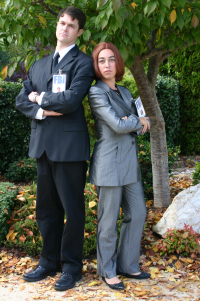 My husband starts a lot of new TV series and I rarely go with him. He kept saying he thought I would like The X-Files, but I thought it would be too scary. I do not do horror. Or vampires. Or whatnot. (For the record, I also originally thought Lost was too scary, and that is one of my favorite TV series of all time.) However, about halfway into his Netflix binge of the first season, I joined him. A year later, we had watched all nine seasons and both movies and were greeting Halloween as Mulder and Scully, anxiously awaiting the much anticipated six-episode season ten.
My husband starts a lot of new TV series and I rarely go with him. He kept saying he thought I would like The X-Files, but I thought it would be too scary. I do not do horror. Or vampires. Or whatnot. (For the record, I also originally thought Lost was too scary, and that is one of my favorite TV series of all time.) However, about halfway into his Netflix binge of the first season, I joined him. A year later, we had watched all nine seasons and both movies and were greeting Halloween as Mulder and Scully, anxiously awaiting the much anticipated six-episode season ten.
I can’t speak for the comics or The Lone Gunmen, but from beginning to end, this is an exemplary series.
First things first. When the intro comes onto screen for the first time, you are going to think that it is old-school and cheesy. However, knowing that–in its time–it won an Emmy and also that the creators stick with (basically) the same intro through all the years makes it sort of awesome. Also, it will come, in time, to signal warm memories.
The set-up of the series is this: a young, eager, ever-rogue FBI agent gets himself assigned to the X-Files, which is the barely-existent, unexplained cases division of the FBI. A new, brilliant agent, who really belongs as a doctor, is assigned to keep an eye on him and the files. Thus begins years and years of the X-Files, its ups and downs, the ins and outs of Mulder’s and Scully’s relationship (which appears really only ever as an addendum to the X-Files themselves), and a number of great supporting characters. Many of the episodes are built on this single thread, where Mulder is hell-bent on exposing supposed alien contact with humans, by which his sister was abducted when they were children. Many more of the episodes are basically episodic, and fall in line more with CSI meets The Twilight Zone (and in some case, meets monster movies). About once a season, you’ll also find a comedic episode, a horror episode, and at least one quirky/time period episode. In my opinion, while the overarching story is what keeps you coming back, the comedy, horror, and especially quirky/time period episodes are among the best.
Yes, you become addicted to whatever it is that is happening under the surface between Mulder and Scully and to finding out that next layer on the onion of alien conspiracy, but you also become addicted to other characters, like Assistant Director Skinner, Alex Krycek, The Lone Gunmen, and even The Smoking Man. You also start looking for the many appearances by famous guest stars; some of them from before they were famous, some after.
And speaking of famous people, there were many guest directors, and some of them famous as well. In fact, it’s the different directors that help make The X-Files the great series that it is. While the series feels cohesive and whole, many of the episodes have their own feel. I don’t know how they managed it so well, but the flavor of the director really shines through, while every episode still remains distinctly X-Files.
The cons: there are questions that remain unanswered, and a few strings that get crossed. (It’s like the opposite of Lost. They never promise any answers, but sometimes they give them to you.) And things get a little bumpy as the actors–especially David Duchovny–became famous and busy. There was always a lot of off-screen press surrounding The X-Files, and supposedly Duchovny couldn’t or wouldn’t show for large bits of some of the later seasons, making it necessary for the writers to either abduct him (in the show), force him into hiding, make him a recluse, and/or add in new agents to take the actual cases. You’ll see.
Also, while Mulder and Scully are one of my favorite media couples, most of the time you are wondering coupla’ what? Much of the series you are left guessing–and hoping–at the true nature of their relationship, and then the absent-Mulder thing really complicates what the writers were doing with them at that time in the series. That ends up okay, until the older Mulder and Scully return for the years-later seasons. I’m not going to spoil anything, but I found the later version of their relationship to be too modern and unsatisfying.
The best bits: Gillian Anderson, episode 3 of season 10, the lone gunmen… and the movies were fun, too. I would watch everything in the order given above, and, if you are really enjoying it, throw in the comics and let me know how that goes.
I love The X-Files. It’s a classic, and it should be.
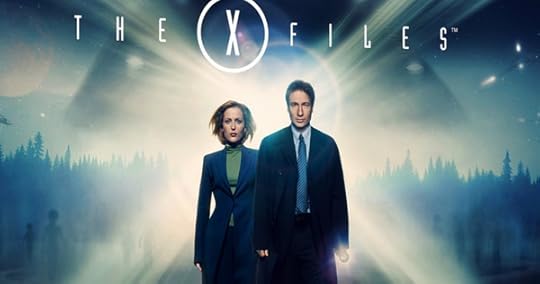


May 17, 2016
Book Review: The Sesame Street Bedtime Storybook
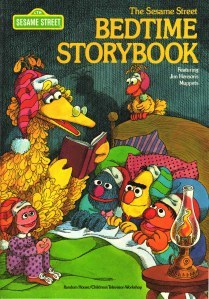 The Sesame Street Bedtime Storybook, featuring Jim Henson’s Muppets. It was published in 1978 by Random House.
The Sesame Street Bedtime Storybook, featuring Jim Henson’s Muppets. It was published in 1978 by Random House.
I don’t really know how or why my kids picked this book out of the stack that was left in the room into which they moved for the summer. (We are in the process of building a house.) What I do know is that I expected some thrown-together junk, a cheap and quick re-telling of traditional fairy tales to use well-liked characters.
Not the case.
It could be my incredible rendering of the voices, from Elmo to Prarie Dawn, but my kids both really enjoyed reading a couple of these stories each night at bedtime, as did I. The stories were refreshing and silly, and sometimes even LOL. While you see the punchlines coming a mile away, it’s still fun to read these stories out loud.
The book is not long at only twelve stories, but each story is longer than expected. And if you love vintage or just have a fondness for Sesame Street…

Note that this is bedtime stories. Sesame Street also has ABC Stories and 123 Stories, both of which we had as children and which I can tell you pretty much nothing about. I liked that these stories did read like bedtime stories, often about dreams or ending with sleep. Many of the old Sesame Street books get great reviews of Amazon, but I imagine you may have to turn to eBay to get yourself copies. (One of my favorite children’s picture books is The Monster at the End of This Book, and, to a lesser degree, Another Monster at the End of This Book.)
Only problems: the illustrations were probably good by the standards of their day, but not so much today. Also, there is a ton of dialogue, as opposed to narration. I like narration better. Especially when voicing between Grover and Cookie Monster is making me hoarse.


Book Review: No Pretty Pictures
 N
N o Pretty Pictures: a Child of War, by Anita Lobel. Published by Greenwillow Books, New York, in 1998, with an unfortunately drab and unexceptional cover (especially considering that the author is known as a children’s illustrator). The more recent 2008 reissue cover is much better.
o Pretty Pictures: a Child of War, by Anita Lobel. Published by Greenwillow Books, New York, in 1998, with an unfortunately drab and unexceptional cover (especially considering that the author is known as a children’s illustrator). The more recent 2008 reissue cover is much better.
DISCLAIMER: I do not see this as a children’s or even YA book. It takes quite a bit of maturity to digest the contents, especially considering her struggles with her faith.
Let’s start with the author, because that is where I started. In fact, it was with her husband, the author of the Frog and Toad series that got me here. My son and I both have fallen in love with the Frog and Toad series over the past several months, and so I gathered in as many Arnold Lobel books from the library as I could find. Then, with the acquisition of On Market Street, I began to notice the other half of the couple, Anita Lobel. So I gathered her books, as well. This came home with me from the library.
 Anita Kempler was born in Poland just before World War II, which would prove to be important because she was Jewish and the Nazis were on their way. The story of her childhood in the Holocaust is told in No Pretty Pictures, and I don’t want to spoil it for you, but one by one her family disappeared as she and her brother managed to cling together and almost magically survive. She ended up in Sweden and then America, where she went to college to receive a BFA and where she met her husband. In the 50s and into the 60s, she was a textile designer. Her first book, Sven’s Bridge, was published in 1965. Lobel has won a Caldecott Honor, Best Illustrated Books, and has been both a writer and an illustrator throughout her long and successful career in children’s books.
Anita Kempler was born in Poland just before World War II, which would prove to be important because she was Jewish and the Nazis were on their way. The story of her childhood in the Holocaust is told in No Pretty Pictures, and I don’t want to spoil it for you, but one by one her family disappeared as she and her brother managed to cling together and almost magically survive. She ended up in Sweden and then America, where she went to college to receive a BFA and where she met her husband. In the 50s and into the 60s, she was a textile designer. Her first book, Sven’s Bridge, was published in 1965. Lobel has won a Caldecott Honor, Best Illustrated Books, and has been both a writer and an illustrator throughout her long and successful career in children’s books.
No Pretty Pictures–Lobel’s autobiography about her experience as a Polish Jew in Europe during the reign of the Nazis–is the outlier, as far as genre. Still, it won her a spot as a National Book Award finalist. You sort of get the impression that she wrote the book because it’s a story she’s often been asked to tell and record, and it ends up a sort of no-nonsense narration. As I started it, I wasn’t sure what to expect.
I couldn’t put it down. I kept reading when I should have been sleeping. And–most telling–I kept talking about it for weeks afterward. It isn’t so much the style or even the scope of this story (I sort of thought I had out-read the subject, to be honest), but the complete transparency. The events are what they were, there’s little to no emotional overlay, no playing around, no fencing things off.
Of course, Lobel’s experience of the war is not exhaustive or comprehensive, but she basically experienced what you already know the Jews experienced. What is so fascinating about her story is four-fold. First, she experienced many different situations, from hiding out to running to being captured. She was in the ghetto. She was in a concentration camp. She was in a convent. She was in the countryside. She was in the city. Etc. Second, the detail with which she recalls her childhood and the events is absorbing and fascinating. You understand, right away, that she was always a bright and observant child, if not a perfect one. Three, she doesn’t hide anything. There were so many times that I poked my husband and said, “Have you ever thought about that aspect of the Holocaust?” Anecdote after anecdote, you will walk hand-in-hand with her as she relays about lice and thieves and diarrhea and old potatoes and–unbelievably enough–the occasional exploitation and weary disconcern of other Jews toward two wandering children.
Fourth, this is an incredibly humane book. And I don’t mean that it’s “nice to people,” I mean that it has a tremendous grasp of and honesty about people. She deals very little with the Nazis, but explores the multi-faceted depths of herself, her family, and her protectors. This means, at times, that you recognize both her foibles and also the sad inability of those who should have loved her best. Her nanny is perhaps one of the most conflicted characters I have ever read, fiction or not.
It’s bleak, but it’s also a little it wonderful. She never should have made it, and yet she did.
I highly recommend this book. It’s a nail-biter and a great study of the human character.
_______________
QUOTES:
“Somewhere there must be a terrible place. A barren area with no light. With leafless trees and no blue in the sky. Where these words stopped being just words and became real things” (p9).
“Below us, above us, we felt the hushed lives of caged people. Waiting for something to change. Praying for rescuers. Even dreaming that the Nazis would lose interest, yawn, and go away” (p45).
“I didn’t know that from hunger one could cave into loss of consciousness, to hallucinations. It never happened to me” (p110).
“Somewhere, before Montelupi, before Plaszow, my brother and I had been forced to leave ourselves. Anchored in numbness, our bodies were nothing but two hungry, itching lumps” (p111).
“I pounced on the groaning board of words, of history dates, of stories, of poems, of the columns of sums to be calculated” (p169).
“But the language I used to speak so excellently when I took my first civilizing steps as a young girl has to be wakened from its veiled sleep” (p189).
“She worshiped the Holy Mother, mistrusted Jews, yet she protected my brother and me with the flapping wings of a demented angel” (p189).
“Or was she dragged along the ground like the woman in our transport to Plaszow? I can picture it. I will never know” (p190).


May 16, 2016
Movie Review: Goosebumps
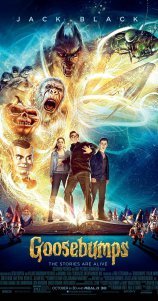 Goosebumps, the movie, released in 2015 by Sony Pictures.
Goosebumps, the movie, released in 2015 by Sony Pictures.
There are a few things that I need to say before I get to this movie. The first is that I do not allow my kids to read Goosebumps or watch the show, because they are too scary (and possibly I have some other reasons). That said, I allowed my kids to watch this movie because it is not considered children’s horror (as the books are), but a comedic family movie. No blood. No deaths. Turns out, the movie is not a retelling of any of the Goosebumps books, but is a fictional-fantasy exploration of the author’s life, meshing his fiction with his work.
And how could a writer resist the plot of a writer’s characters coming to life and trying to kill everyone?
It ended up a little scarier than I wanted it to be. (While my children handle fantasy scary well–like Darth Vader, Dementors, and Ring Wraiths–the vengeful, magical (creepy!) dummy was a bit much.) Then again, there were no nightmares or further conversations needed, so I would say it skated the border pretty well, considering that it was a sort of tribute to the whole horror genre, from its characters, settings, and plot, to its classic ending.
Garnering fairly good reviews from IMDB and RottenTomatoes, as well as some critical acclaim, I would give this movie a “pretty darn good,” and possibly even add it to my kids’ DVD library. It reminded me a lot of Jumangi and Zathura (said to be spiritual sequels or some such nonsense), both of which we own. They all jive in tone, among other things. But–and I really hate to say this–the punchline was obvious to me from the beginning and I did not like Jack Black in the role of R.L. Stine. There was just something about his performance that took Black’s endearing goof and made it distracting and unfitting… maybe even forced. I don’t know. The real shining performances here were by the best friend and the aunt. Really funny stuff.
Then again, if I were R.L. Stine, I would be very happy with this movie (yes, the whole thing), especially with the easy-to-spot, fun cameo.
I’m guessing that if you have read tens or hundreds of Stine’s books, this movie would be even better, featuring many of his most popular characters. But since I only made it through one Fear Street and am still weary of lipstick to this day…
In short, if you like books (and why else would you be on this site?), grab your family and a bucket of popcorn, snuggle up, and enjoy.
_______ABOUT THE AUTHOR_______
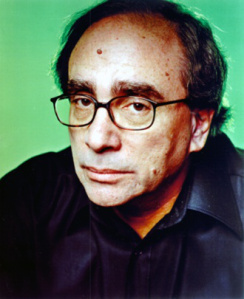
Stine is most famous for his Goosebumps and Fear Street series, which are both horror stories for children (and YA). Stine is one of those especially prolific authors, with almost 200 books in his Goosebumps series and more than 300(?) books to his name. Born in the 40s, Stine didn’t publish his first children’s horror book until the mid-80s, although he had been writing humor since the age of 9 and working in children’s humor as an editor and at magazines, as well as writing books as Jovial Bob Stine. When laid off from Scholastic in the 80s, he decided to write full time and, shortly after, started writing horror. His first book was well-received, and Goosebumps started appearing in 1992. At a rate of 1-2 books per month, his career began in his middle ages, but has been prolific and has included a TV series, best-selling status, and the position of one of the best-selling children’s authors of all time.


April 21, 2016
Series Review: The Pendragon Cycle
 The Pendragon Trilogy, by Stephen R. Lawhead, which includes Taliesin, Merlin, and Arthur. I read old paperbacks from Avon Books which I received as hand-me-downs from my aunt. The original publication dates were 1987, 1988, and 1989.
The Pendragon Trilogy, by Stephen R. Lawhead, which includes Taliesin, Merlin, and Arthur. I read old paperbacks from Avon Books which I received as hand-me-downs from my aunt. The original publication dates were 1987, 1988, and 1989.
Turns out I was confused about these books. (Side note: Did you know there is a website to help you figure out the order of books in a series? I would have liked to know about it some time ago. Check it out HERE.) I had figured out the order of the trilogy as Taliesin, Merlin, and Arthur, but here and there I would see other titles in the series. So, once I had finished the trilogy, I researched and discovered that the “trilogy” was expanded, a few years after publication, into a “cycle,” with the addition of two more books: Pendragon and Grail. The problem? Because Lawhead released these after realizing the giant hole he left in the plot in the quick wrap-up of Arthur, he ended up writing into the hole. In other words, the books suddenly stop being (or working) chronologically. Called “more like an appendix” and “better than Arthur,” the latter books are now read by many in a makeshift order, which I wish I had done.
Sorta. Because even though I would have appreciated the whole thing in the chronological-event order without the gaping hole, I didn’t enjoy the first three books enough to want to continue to two more. I’m still torn on whether or not I should or want to continue the series.
 In the words of Jessi from GoodReads, “If I were to go back in time, I would read the first book in Pendragon, then the first two books of Arthur, then go back and finish Pendragon, then finish Arthur. That’s how it actually goes sequentially.” Although, with Grail thrown in there, you would have to insert it before Arthur‘s third and final “book.” For a list of the chronological progression, see the Wikipedia article HERE. But how obnoxious do we want to get? How much does all this jumping around and amending take away from the quality of the series? I mean, reading it without knowing these tricks, I just got to the end and–through tiny little tears–thought, What?!? We worked our way (the entire time) up to the Kingdom of Summer and then it was SKIPPED?!?
In the words of Jessi from GoodReads, “If I were to go back in time, I would read the first book in Pendragon, then the first two books of Arthur, then go back and finish Pendragon, then finish Arthur. That’s how it actually goes sequentially.” Although, with Grail thrown in there, you would have to insert it before Arthur‘s third and final “book.” For a list of the chronological progression, see the Wikipedia article HERE. But how obnoxious do we want to get? How much does all this jumping around and amending take away from the quality of the series? I mean, reading it without knowing these tricks, I just got to the end and–through tiny little tears–thought, What?!? We worked our way (the entire time) up to the Kingdom of Summer and then it was SKIPPED?!?
But to be honest, it wasn’t as surprising as it should of been, because the whole trilogy has major issues with plot development. We’ll get to that in a minute.
First, let’s talk about another super-handy list at Wikipedia that–had I known then what I know now–I would have printed out to have hand while reading. This list is the modern character and place name equivalents of the ones that Lawhead uses. In his defense, the whole series is moved back several centuries (to fifth century Britain from medieval times) to line it up more closely with the demise of Atlantis and the Roman empire. From there, the books are highly history-inspired, which means that the names have been made more appropriate to the time period. However, I really fault Lawhead for not giving us a simple list by which to decipher the characters and places we have grown accustomed to, like the (obvious) Guinevere as Gwenhwyvar, or–the much less obvious–Excalibur as Caledvwlch.
Not to mention, it would have been helpful to know why I was beginning an Arthurian trilogy on Atlantis, with nary a character to recognize (or so I thought).
Basically, I love reading Arthurian legends, but–despite its fan-base and high recommendations–I have a lot to complain about this series. Some more:
The narrator changes. This wouldn’t be so bad if it happened on a consistent basis, but it doesn’t. And there were times I was wondering who on earth was talking to me, and why. Not only that, but the voice barely changes (or not at all) between the narrators. Only the perspective does.
The book was rampant with negative phrases like “no less than.” It drove me batty.
There were a lot of battles. Detailed. Especially in Arthur. Some people live for that type of fantasy writing. I do not.
The series just plain lacked excitement. The best bits were really the middle of Taliesin and the end of Arthur. In between, I was usually bored.
Lawhead has a really strange way of in-your-face foreshadowing. In and of itself, it’s a bit laughable. But when you pair it with lack of delivery, it’s downright infuriating. Like, he might say, “Their fears for the morning would prove to be true.” Then, in the morning, maybe it would drizzle and then they would win the battle. WHAT?!? This happened over and over and over. I would get all psyched up for some fore-told event, and the event itself would fizzle in a lake of mediocrity and ordinariness.
Specifically, Morgian’s (Morgan le Fay) evilness is talked up frequently and Merlin is always showing physical anxiety about her. But when she does show up–so rarely–she’s almost all talk and she accomplishes very little. The two truly vile things she actually does manage are off-screen and vague. The same is true for Guinevere (in the negative), but I am assured that she comes more into her own in the later books.
All in all, I felt very unfulfilled with character and plot development. I felt like there were a whole mess of words which took me nowhere. And the development that did happen came in fits and starts that trailed off into oblivion. (It’s hard to accurately describe this feeling. Because I know, literally, the plot did continue on. But it was like running in a dream. Or like you were reading an author’s plot notes. Or running on a treadmill. There was no zing. No exceitement.) Plus, it seems to me that Lawhead omitted many of the messier sides of his primary characters in favor of a glossier Christianity (and I say this as a Christian.) This is boring and inauthentic. Where is the affair? Where is the illegitimate son? It’s part of the legends, and it’s part of what would make these characters both relatable and–in the long run–heroes.
Lawhead is quite an author for telling, anyways. He’s more likely–at least in these books–to tell you that something is “majestic” than to help you feel its majesty.
In conclusion, if you like Arthurian legends or classic fantasy and are willing to persevere when things are less than perfect, then you should take a crack at this series. I would recommend having a list of the modern names, nearby, and also read the books in the order recommended above. Keep a keen eye on passing time (while understanding that some of the characters live much longer than mere humans), place, tribes/people groups, and people. With the cursory knowledge that you now have, of the series, I’m pretty sure you’ll have a much better experience than I did.
Oh, and Atlanteans = Elves.
_______________
QUOTES:
TALIESIN:
“‘Yes, and good fortune will require more of you than failure ever did'” (p155).
“‘That is where you are wrong, woman. There is never enough time for love-making. We must take it when we can'” (p330).
“‘That matters but little,’ Cuall reminded him. ‘They are here, and that is the meal that is on our plate'” (p336).
MERLIN:
“Yet, every man has two names: the one he is given, and the one he wins for himself” (p15).
“And as there is much evil in the world, there is much doubt also” (p15).
“Humility, if it comes at all, most always comes too late” (p21).
“…the twin fields of bed and battle” (p27).
“A city is an unnatural place” (p30).
“But as I said, men’s hearts remember long after their minds have forgotten” (p38).
“You must understand, Myrddin Bach, not every man will follow the Light” (p45).
“They did not trust writing, and in this showed remarkable wisdom” (p61).
“I believe that certain powerful events leave behind their own lingering traces which also color the land in subtle ways” (p135).
“…the seasons fly? Up they swirl, winging back to the Great Hand which gave them. They fly like the wild geese, but nevermore return” (p193).
“Be thankful you are knit with such strong stuff” (p324).
“To decide for one is to decide against another. I never imagined it would be this hard” (p328).
“This is our work in creation: to decide. And what we decide is woven into the thread of time and being forever” (p328).
“But remember the church is only men, and men can become jealous of another’s favor. Do not hate them for it” (p329).
“…even though I know the Light is ever found in the lost unlikely places” (p333).
“Hearing with understanding is perhaps the greater part of wisdom” (p347).
“Once spoken, a word can not be called back; once loosed, an arrow cannot return to the bow. What happens, for good or ill, happens forever, and that is the way of it” (p364).
“As I have said, the illuminating spirit, like the wind, goes where it will, and sheds a light that all-too-often obscures as much as it reveals” (p381).
“…you are not the first man to love a woman. Stop acting like a wounded bear and let us discover what can be done” (p385).
“It happens like this sometimes–and all the plans, all the reasons, all desires and possibilities fade to nothing. And all that remains is the single unwilled act” (p392).
“Of course, there is no certainty in following, either. That is what makes it faith” (p393).
“Unreasonable men are even unreasonable, and only become more so when threatened. Truth always threatens the false-hearted” (p393).
“…forgive yourself as you have been forgiven. Your failings are not unique to you alone” (p421).
“That she loved where she should rightly despise was her glory” (p439).
ARTHUR:
“If you feel maligned and impugned in his presence,’ he said, ‘no doubt it is the truth working in you'” (p35).
“It was, they discovered, the foundation stone of the worlds-realm, so they decided to lift it up and see what lay beneath it. This they did. And do you know what they found?’/’I cannot say. What did they find?’/’Love,’ replied Myrddin simply” (p148).
“…as if good men and brave did not sleep in turf houses in ground hallowed by their own blood… as if war were a word” (p197).
“Great Light! The enemy’s power is so fragile! The devils can use only what we ourselves give them” (p220).
“‘Then be worthy, boy. No one stands between you and your honor!'” (p330).
“That which is given to us to do, we will do,’ he said and turned his face away. ‘We are men and not angles after all'” (p404).


March 19, 2016
Best Books: Picture Books
This wasn’t a list I was going to make. But then, I found myself with three adorable nephews and an Amazon Prime account for their birthdays. Now, I know some of the books that I have loved reading to my kids–and Lord knows I spent enough time researching the best and most classic books–but I didn’t have any tidy, little list to refer to. So I did my usual research and came up with a great starting point. Thanks to Scholastic, Library Journal, and New York Times, etc.
Best Picture Books
Where the Wild Things Are, Maurice Sendak

The Very Hungry Caterpillar, Eric Carle
Don’t Let the Pigeon Drive the Bus, Mo Willems
Goodnight Moon, Margaret Wise Brown
The Snowy Day, Ezra Jack Keats
Make Way for Ducklings, Robert McCloskey
Knuffle Bunny, Mo Willems
Alexander and the Terrible, Horrible, No Good, Very Bad Day, Judith Viorst
Bark, George, Jules Feiffer
The Monster at the End of This Book, Jon Stone
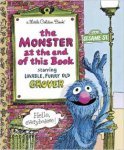
Lilly’s Purple Plastic Purse, Kevin Henkes
Green Eggs and Ham, Dr. Seuss
Miss Rumphius, Barbara Cooney
Caps for Sale, Esphyr Slobodkina
Frog and Toad Are Friends , Arnold Lobel
The Story of Ferdinand, Munro Leaf
A Sick Day for Amos McGee, Philip Stead
Pete the Cat: I Love My White Shoes, Eric Litwin
Millions of Cats, Wanda Gag
Corduroy, Donald Freeman

Chicka Chicka Boom Boom, Bill Martin Jr.
Tuesday, David Weisner
Kitten’s First Full Moon, Kevin Henkes
We Are In a Book, Mo Willems
Bread and Jam for Frances, Russell Hoban
Go, Dog, Go!, P. D. Eastman
Miss Nelson Is Missing!, Nelson Ellard
Owl Moon, Jane Yolan
Blueberries for Sal, Robert McCloskey
The Little House, Virginia Lee Burton

The Lorax, Dr. Seuss
Strega Nona, Tomie de Paola
The True Story of the Three Little Pigs, Jon Scieszka
The Cat in the Hat, Dr. Seuss
The Lion and the Mouse, Jerry Pinkney
Click, Clack, Moo, Doreen Cronin
Good Night, Gorilla, Peggy Rathman
Curious George, H. A. Rey
Freight Train, Donald Crews
Rudie Nudie, Emma Quay
The Very Cranky Bear, Nick Bland

Where Is the Green Sheep?, Mem Fox
Room on the Broom, Julia Donaldson
Edwina the Emu, Sheena Knowles
Green Eggs and Ham, Dr. Seuss
Madeline, Ludwig Bemelmans
Harry the Dirty Dog, Gene Zion
Who Sank the Boat?, Pamela Allen
Imagine, Allison Lester
Wombat Stew, Marsha K. Vaughan
The Tale of Peter Rabbit, Beatrix Potter
Where the Forest Meets the Sea, Jeannie Baker

The Jolly Postman, Janet and Allan Ahlberg
The Little Yellow Digger, Betty and Alan Gilderdale
Moo, Baa, La La La!, Sandra Boynton
Sebastian Lives in a Hat, Thelma Catterwell
Where’s Spot?, Eric Hill
Brown Bear, Brown Bear, What Do You See?, Eric Carle
Iggy Peck, Architect, Andrea Baety
The Gruffalo, Julia Donalson
Uno’s Garden, Graham Base

Guess How Much I Love You, Sam McBratney
Possum Magic, Julie Vivas
We’re Going on a Bear Hunt, Michael Rosen
Magic Beach, Alison Lester
John Brown, Rose and the Midnight Car, Jenny Wagner
Dear Zoo, Rod Campbell
The Polar Express, Chris Van Allsburg
Doctor De Soto, William Steig
Scaredy Squirrel, Melanie Watt
Officer Buckle and Gloria, Peggy Rathmann
There is a Bird on Your Head, Mo Willems

How the Grinch Stole Christmas, Dr. Seuss
Go Away, Big Green Monster!, Ed Emberley
The Sneetches and Other Stories, Dr. Seuss
King Bodgood’s in the Bathtub, Audrey Wood
The Arrival, Shaun Tan
Bedtime for Frances, Russell Hoban
The Three Pigs, David Wiesner
Rhyming Dust Bunnies, Jan Thomas
Stellaluna, Janell Cannon
But Not the Hippopotamus, Sandra Boynton
May I Bring a Friend?, Beatrice Schenk de Regniers

I Want My Hat Back, Jon Klassen
Chrysanthemum, Kevin Henkes
Cloudy with a Chance of Meatballs, Judi Barrett
Eloise, Kay Thompson
Flotsam, David Weisner
Zoom at Sea, Tim Wynne-Jones
Pierre, Maurice Sendak
Madeline’s Rescue, Ludwig Bemelmans
Fortunately, Remy Charlip
A Visitor for Bear, Bonny Becker

Bear Snores On, Karma Wilson
Not a Box, Antoinette Portis
The Giving Tree, Shel Silverstein
The Paper Bag Princess, Robert Munsch
No, David!, David Shannon
Tikki Tikki Tembo, Arlene Mosel
Arnie the Doughnut, Laurie Keller
The Stinky Cheese Man and Other Stupid Fairy Tales, Jon Scieszka
The Gardener, Sarah Steward
Traction Man is Here!, Mini Grey

The Mitten, Jan Brett
The Kissing Hand, Audrey Penn
Ira Sleeps Over, Bernard Waber
Duck on a Bike, David Shannon
The Maggie B, Irene Haas
The Carrot Seed, Ruth Krauss
The Little Mouse, the Red Ripe Strwberry, and the Big Hungry Bear, Audrey Wood
Are You My Mother?, P. D. Eastman
Grandfather’s Journey, Allen Say
George and Martha, James Marshall

Press Here, Herve Tullet
The Mysteries of Harris Burdick, Chris Van Allsburg
The Library, Sarah Stewart
Zen Shorts, Jon J. Moth
Thank You, Mr. Falker, Patricia Polacco
Olivia, Ian Falconer
Sylvester and the Magic Pebble, William Steig
Love You Forever, Robert Munsch
If You Give a Mouse a Cookie, Laura Numeroff
The Other Side, Jacqueline Woodson
The Snowman, Raymond Brigg
SkippyJon Jones, Judy Schachner

The Keeping Quilt, Patricia Polacco
The Little Engine That Could, Watty Piper
My Lucky Day, Keiko Kasza
The Day the Crayons Quit, Drew Daywalt
Peek-A-Who, Nina Laden
Harold and the Purple Crayon, Crockett Johnson
Charlie and Lola (series), Lauren Child
The Underwear Book, Todd Parr
A Bear Called Paddington, Michael Bond

The Big Book of the Bearenstein Bears, Stan and Jan Bearenstein
Put Me in the Zoo, Robert Lopshire
The Ghost Eye Tree, Bill Martin
Fancy Nancy, Jane O’Connor
Father Christmas, Raymond Briggs
Gorilla, Anthony Browne
The Mick Inkpen Collection, Mick Inkpen
There Was an Old Lady Who Swallowed a Fly, Pam Adams
The Babar Collection, Jean de Brunhoff
Jim, Who Ran Away from His Nurse and Was Eaten by a Lion, Hilaire Belloc
Polar Bear, Polar Bear, What Do You Hear?, Eric Carle
What Do People Do All Day?, Richard Scarry
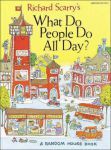
The Story of the Little Mole Who Knew It Was None of His Business, Wener Holzwarth
Lost and Found, Oliver Jeffers
Adventures of Mrs. Pepperpot, Alf Proysen
Operation Alpha Monkey and Me, Emily Gravett
Time for Bed, Mem Fox
Operation Alphabet, Al MacCuish
Hippos Go Beserk!, Sandra Boynton
The Tiger Who Came to Tea, Judith Kerr
Funnybones, Janet and Allan Ahlberg
Elmer, David McKee
I Love You, Blue Kangaroo, Emma Chichester Clark

Little Tim and the Brave Sea Captain, Edward Ardizzone
The Princess and the Pea, Lauren Child
The Velveteen Rabbit, Margery Williams
Some Chapter Books to Read Out to Your Children
Maps, Aleksandra and Daniel Mizielinska
A Little History of the World, E. H. Gombrich
Tales from Shakespeare, Charles and Mary Lamb
Our Island Story, H. E. Marshall
The Diary of a Young Girl, Anne Frank
The Oxford Nursery Rhyme Book, Iona and Julian Opie
Tales of Hans Christian Andersen, Naomi Lewis
The Complete Nonsense of Edward Lear, Faber
The Hutchinson Treasury of Children’s Literature, Alison Sage
Horrible Histories: Rotten Romans, Terry Dreary
The Way Things Work, David Macaulay
Carrie’s War, Nina Bawden

Pinocchio, Michael Morpurgo
Stig of the Dump, Clive King
The Wolves of Willoughby Chase, Joan Aiken
The Magician’s Nephew, C. S. Lewis
Five Children of the Western Front, Kate Saunders
Charlotte’s Web, E. B. White
How to Train Your Dragon, Cressida Cowell
South Sea Adventure, Willard Price
Goodnight Mr. Tom, Michelle Magorian
Saffy’s Angel, Hilary McKay
Charmed Life, Diana Wynne Jone
Dead Man’s Cove, Lauren St. John

Noble Conflict, Malorie Blackman
The Abominables, Eva Ibbotson
Ballet Shoes, Hoel Streatfeild
The Little White Horse, Elizabeth Goudge
A Wrinkle In Time, Madeleine L’Engle
Skellig, David Almond
Harry Potter, J. K. Rowling
His Dark Materials, Philip Pullman
Stormbreaker, Anthony Horowitz
Kepper, Mal Peet
Watership Down, Richard Adams
The Hobbit, J. R. R. Tolkein
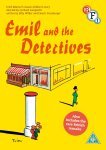
Emil and the Detectives, Erich Kastner
James and the Giant Peach, Roald Dahl
The Little Princess, Frances Hodgson Burnett
Just So Stories, Rudyard Kipling
Journey to the Center of the Earth, Jules Verne
The Doll People, Ann M. Martin
The Sword in the Stone, T. H. White
The Secret Garden, Frances Hodgson Burnett
Heidi, Johanna Spyri
Sophie’s Adventures, Dick King-Smith
Paddington Races Ahead, Michael Bond
How the Whale Became, Ted Hughes
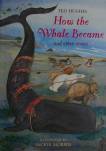
A Boy and a Bear in a Boat, Dave Shelton
Beatrix Potter: The Complete Tales, Beatrix Potter
The Adventures of TinTin: The Secret of the Unicorn, Herge
Alice’s Adventures in Wonderland, Lewis Carroll
The Phantom Tollbooth, Norton Juster
The Wonderful Wizard of Oz, L. Frank Baum
The Little Prince, Antoine de Saint-Exupery
The Winnie-the-Pooh Collection, A. A. Milne
Pippi Longstocking, Astrid Lindgren
Swallows and Amazons, Arthur Ransome
Five on a Treasure Island, Enid Blyton
The Story of the Chalet School, Elinor M. Brent-Dyer
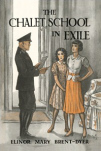
The Railway Children, E. Nesbit
The Wind in the Willows, Kenneth Grahame
The Story of Doctor Dolittle, Hugh Lofting
The BFG, Roald Dahl
Fattypuffs and Thinifers, Andre Maurois
Anne of Green Gables, L. M. Montgomery
Little Women, Louisa May Alcott
The Greengage Summer, Rumer Godden
The Peacock Spring, Rumer Godden
The Knife of Never Letting Go, Patrick Ness
How I Live Now, Meg Rosof
The Summer Book, Tove Jansson


March 18, 2016
Series Review: Frog and Toad

The Frog and Toad series by Arnold Lobel, which we read in Harper’s Frog and Toad Storybook Treasury, which includes all four Frog and Toad books:
Frog and Toad Are Friends
Frog and Toad Together
Frog and Toad All Year
Days with Frog and Toad
Arnold Lobel, 1933-1987, was a children’s book illustrator and writer. He won several awards and praise–including the Caldecott–for books like Frog and Toad Are Friends, Mouse Soup, and Fables. He grew up in Schenectady, New York, went to art school, and married another childrens’ illustrator and writer and had two kids: one boy and one girl. Not much seems to be made of his life, as details are scarce. What we know is that he was talented and prolific, and his writing changed the Early Reader genre.
My son and I actually read this book as part of our virtual school curriculum for second grade. The first book came in the school supplies box and was scheduled for the end of the first semester. I kinda hoped a book about creatures would intrigue my son, but so far he had only liked exactly one series of books in the whole world (and a whopping lifetime total of about three other books (Cleary’s Ramona series, The Day the Crayons Quit, Press Here, and Peek-a-Who)). Both my eight-year-old son and I were pleasantly surprised and soon, we had bought the whole treasury. So while he was discovering Frog and Toad, he also discovered Jack Stalwart, which expanded his enjoyment of books by more than 200 per cent. However, while I was groaning through Jack Stalwart (review forthcoming), I was thoroughly enjoying Frog and Toad.

TOGETHER
And I think some of the reasons I loved it spring from the time period when it was written, which is also why I enjoyed Ramona. But Frog and Toad seems even more classic, even more gentle, and even more universal. While Frog and Toad are having fun, going on adventures, and encountering trials, they are loyal, kind, respectful, and calm. Boy do I need more of that.
They also embody a type of platonic same-sex friendship that is on the (sad) decline and is oftentimes misunderstood and disrespected in our current culture. Humans were meant for this type of Ruth and Naomi, Anne and Diana relationship which involves a deep level of familiarity (on emotional, spiritual, experiential, and even physical levels). Anymore, it is often relegated just to family (if that). So that’s one of the reasons I love Frog and Toad. I want a friend like that. I have had friends like that. I want my son to grow up to have great, bonded relationships.
I love the pace of the books, the close observation of nature, and the minutiae of a simple life. I love the quiet predictability and the serene way the characters encounter the unexpected. I love the illustrations. I appreciate the clean, un-confused writing and the clean, un-confused watercolors. Clearly, I love Frog and Toad, and so should you.
_______________
Other books by Lobel, which I will be reviewing soon:
The Comic Adventures of Old Mother Hubbard and Her Dog
The Great Blueness and Other Predicaments
Small Pig
Owl at Home
Grasshopper on the Road
A Treeful of Pigs
Fables
Uncle Elephant
Ming Lo Moves the Mountain
The Book of Pigericks: Pig Limericks
Mouse Soup
Mouse Tales
These two books were compiled and colored (by Lobel’s daughter) posthumously:
The Frogs and Toads All Sang
Odd Owls and Stout Pigs: A Book of Nonsense
These are some more books which are harder to find, and I may not be able to review them for you:
The Rose in My Garden
The Ice-Cream Cone Coot and Other Rare Birds
Lucille
A Zoo for Mister Muster
A Holiday for Mister Muster
Giant John
Whiskers and Rhymes
On the Day Peter Stuyvesant Sailed Into Town
How the Rooster Saved the Day
The Man Who Took the Indoors Out
Prince Bertram the Bad
Arnold Lobel’s Mother Goose
The Random House Book of Mother Goose (illustrator)
The Bears of the Air
Martha the Movie Mouse
A few award-winning books by wife and Polish author Anita Lobel:
Sven’s Lighthouse
One Lighthouse, One Moon
On Market Street
The Rose in My Garden (with her husband)
How the Rooster Saved the Day
And finally, the Frog and Toad musical, commissioned by daughter Adrianne, and premiering in 2002, hitting Broadway in 2003, and nominated for multiple Tonys:
A Year with Frog and Toad


March 17, 2016
Book Review: Socks
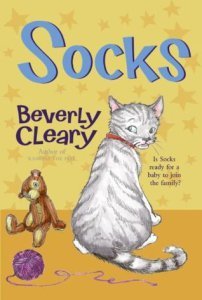 Socks, by Beverly Cleary, and first published in 1973. Seen here in the William Morrow and Company version illustrated by Tracy Dockray.
Socks, by Beverly Cleary, and first published in 1973. Seen here in the William Morrow and Company version illustrated by Tracy Dockray.
Let me begin this review with a revelation: I hate cats. Let me also give a review spoiler: I loved this book. My loving this book came as a surprise to myself.
I am in the middle of reading out most of the Beverly Cleary books (there are a lot of them) to my kids. I have already reviewed the Ramona series and the Henry Huggins series, as well as Muggie Maggie. We have a number of the books, mostly in the Ramona series, and we have been adding to them from the library. Socks was one of the Cleary books that we did not have but the library did. So we snagged it, despite my distaste of the feline.
Surprise! This book is perhaps the best animal fiction that I have ever read. I felt both like I was utterly human and also in the head of Socks as I read it. There is some personification going on, yet it remains true to the nature of cats. The book was funny and sensitive, well written and interesting. Seriously, I would highly recommend it for young readers or for family reading time.
I would also highly recommend it for families of a small child which are adding on a second soon, since the book deals with a coddled cat who is being usurped by a new baby.
Even though it does not tie into Klickitat Street and all the other Cleary characters, I think this is a standalone gem.


February 9, 2016
Series Review: Henry Huggins
 The Henry Huggins series of books by Beverly Cleary. They are, in chronological order, Henry Huggins (1950), Henry and Beezus (1952), Henry and Ribsy (1954), Henry and the Paper Route (1957), Henry and the Clubhouse (1962), and Ribsy. The Henry Huggins series contains the Ribsy series and meshes with the Ramona series.
The Henry Huggins series of books by Beverly Cleary. They are, in chronological order, Henry Huggins (1950), Henry and Beezus (1952), Henry and Ribsy (1954), Henry and the Paper Route (1957), Henry and the Clubhouse (1962), and Ribsy. The Henry Huggins series contains the Ribsy series and meshes with the Ramona series.
For our second–and the second largest–character series by Cleary, we moved from Ramona to Henry and his beloved dog, Ribsy. The first scene introduces Ribsy and he appears in all the books, more or less prominent.
We were once again drawn into life on Klickitat Street in 1950s Oregon. We were once again lulled and charmed by the simple writing, the realistic characters, and the small things of suburban life. While we did enjoy the series, we found it did not quite live up to the Ramona series.
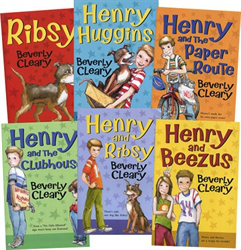
A couple complaints: too many adverbs (those pesky, oft-unnecessary -ly words), and sometimes Huggins is a butthead. Yes, he is a little boy and little boys are often buttheads, but my kids were surprised by Henry’s internal dialogues and how annoyed he is by anyone who gets in his way. He wouldn’t act out, but he’d sure think some mean things. (Of course, this is all relative to the time period and place we are reading about. His being a butthead is nothing compared to some more modern characters and situations my kids might read about.)
Also, Ramona is not entirely consistent with her character in her namesake series. Just a warning: you aren’t going to fall in love with Ramona laterally.
I honestly don’t know if I have much more to say. Huggins was nice, but it was no Ramona. Cleary is nice, but she’s at her best with Ramona. Read Ramona first, and if you want to stay in that world, try Huggins. Our favorite was Henry and the Clubhouse.


January 27, 2016
Book Review: Muggie Maggie
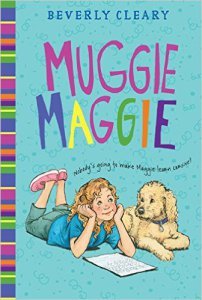 Muggie Maggie, by Beverly Cleary. Published in 1991, by HarperCollins.
Muggie Maggie, by Beverly Cleary. Published in 1991, by HarperCollins.
I actually forgot that we read this book before Christmastime, which I think says a lot about the book itself. We were waiting for the next Henry Huggins books, so we decided to read this one-book Beverly Cleary, which we already had in our library. It was forgettable.
Now, I have really enjoyed Beverly Cleary. Our family has been enjoying her at bedtime for months. We really enjoyed Ramona Quimby, and are moderately enjoying Henry Huggins. We were let down, then, when we read through this book in a couple nights.
First, it’s just too short. Cleary’s allure, as a writer, is her “normal,” nostalgic characters. Less so are her plot lines, which usually cover plenty of “normal” days in the lives of her characters. With such a slim, singular volume, we don’t become invested enough in Maggie to want to follow her through her normal adventures.
We also found the plot to be a little weird. Why Maggie chooses cursive to mutiny about left my kids feeling distanced from the writing. Perhaps its because they are Montessori kids and learned cursive in kindergarten? Even so, many children are not learning cursive at all these days. So the plot has become a bit irrelevant, or just, as I said, a little weird. Perhaps a secondary plot line about something deeper would give some sort of backstory as to why Maggie is mutinying now?
Plus, the title should have just been Muggie.
I wouldn’t really discourage anyone from reading Muggie Maggie. As always, the writing is clear and un-distracting, the setting clean and refreshing, and the situations entertaining. However, I would tell you that you are much better to read the Ramona series, the Henry series, or probably some of her other books (which we have not read yet, like The Mouse and the Motorcycle or Dear Mr. Henshaw). In the end, you could fill your arms with great Cleary books, and just leave Muggie Maggie at the bookstore.





